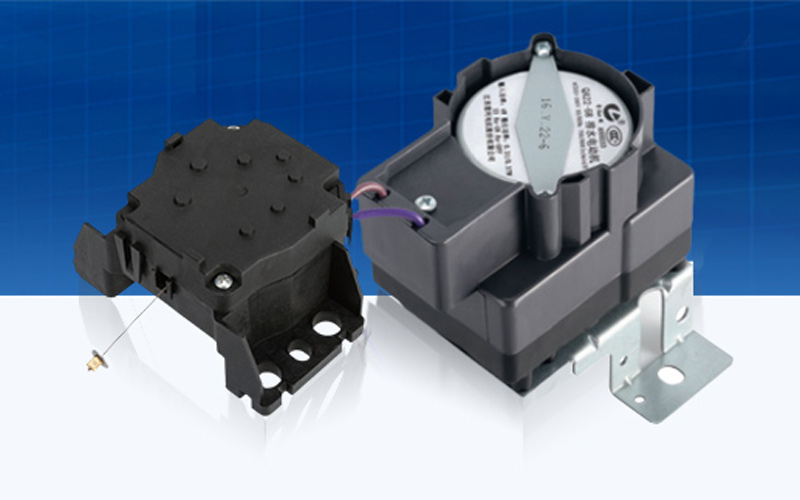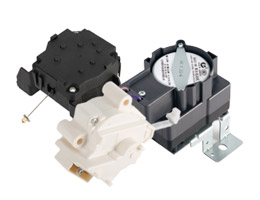Washing machines are vital household appliances, offering convenience, efficiency, and reliable cleaning performance worldwide. While most people are familiar with the drum, detergent drawer, and water inlet, the drain motor is one of the most important yet often overlooked components. Without it, dirty water would remain trapped in the tub, preventing the wash cycle from completing properly.
This guide explores how a drain motor works in washing machines, its components, working principles, maintenance tips, and troubleshooting techniques. Whether you are an appliance repair technician, an engineering student, or a curious homeowner, this article will give you a complete understanding of the drain motor’s role.

What is a Drain Motor in a Washing Machine?
The drain motor, also called the drain pump, expels dirty water from the washer after washing and rinsing cycles. It works in combination with the drain pump assembly, hoses, and control circuitry to ensure water flows out to the household drain system.
Key Functions:
- Removes dirty water after the wash cycle.
- Expels rinse water after the rinse phase.
- Prepares the tub for spinning by eliminating excess water.
- Prevents water stagnation that could cause odors or mold.
Types of Drain Motors
While the core function remains the same, drain motors vary depending on washing machine design and manufacturer.
| Drain Motor Type | Description | Common Usage |
| Synchronous AC Motor | Uses alternating current to drive the pump impeller at a fixed speed. | Common in front-load machines. |
| Universal Motor | Operates on AC or DC, higher speed capability. | Found in some high-speed draining models. |
| DC Brushless Motor | Uses electronic commutation for quiet and efficient operation. | Used in premium energy-efficient machines. |
Main Components of a Drain Motor System
Understanding the parts of a drain motor assembly is key to understanding its operation.
Motor Housing
Shields internal parts from water, dust, and physical damage to ensure reliable operation.
Rotor and Stator
- Rotor: The rotating component that drives the impeller.
- Stator: The stationary coil assembly that creates the magnetic field.
Impeller
A small fan-like structure connected to the rotor that pushes water through the drain hose.
Shaft Seal
Prevents water from leaking into the motor chamber.
Electrical Connector
Links the motor to the washing machine control board or timer.
Drain Pump Housing
Houses the impeller and channels water flow from the tub directly into the drain hose.
How a Drain Motor Works – Step-by-Step Process
Let’s explore the step-by-step operation of a washing machine drain motor during its cycle.
Step 1: Control Signal Activation
At the end of a wash or rinse cycle, the washing machine control board sends an electrical signal to the drain motor.
Step 2: Motor Rotation
The motor starts spinning the impeller, which generates a centrifugal force that moves water from the tub into the pump chamber.
Step 3: Water Movement
The spinning impeller pushes water into the drain hose, which is connected to the household drain pipe.
Step 4: Tub Emptying
The motor continues running until water level sensors or timers indicate the tub is empty.
Step 5: Automatic Shut-off
Once draining is complete, the motor stops to conserve energy and prepare for the next cycle.

The Science Behind the Drain Motor
Electromagnetic Operation
Most drain motors generate a rotating magnetic field via stator coils, which then drives the rotor to pump water.
Hydrodynamic Pumping
The impeller uses hydrodynamic principles to convert rotational energy into kinetic energy, pushing water out through the pump housing.
Synchronous vs. Asynchronous Operation
Synchronous motors maintain a fixed speed matching the power supply frequency.
Asynchronous motors can have slight speed variations depending on load.
Drain Motor in Different Washing Machine Types
Front-Load Washing Machines
Use high-efficiency AC drain motors.
Often incorporate filter traps to catch debris before it reaches the impeller.
Top-Load Washing Machines
May use simpler universal motors.
Pump assembly may be integrated into the transmission housing in older designs.
Compact or Portable Washers
Low-power DC motors enhance energy efficiency while ensuring quiet, smooth operation in washing machines.
Common Problems with Drain Motors
| Problem | Possible Cause | Symptoms |
| Motor not running | Electrical fault, blown fuse, faulty control board | Machine won’t drain |
| Loud noise during draining | Damaged impeller, debris in pump housing | Grinding or rattling sound |
| Slow draining | Clogged hose or filter | Water remains in tub after cycle |
| Leaks | Worn shaft seal or cracked pump housing | Water under machine |
Maintenance Tips for Long Motor Life
Regularly clean the filter to avoid debris buildup.
Check drain hoses regularly for any kinks or blockages.
Run periodic cleaning cycles with descaling solution to prevent limescale buildup.
Avoid overloading the machine, which can cause excess strain on the motor.
Troubleshooting a Faulty Drain Motor
Safety First
Disconnect the washing machine from its electrical power source.
Turn off the washing machine’s main water supply.
Steps to Diagnose
- Check the Filter – Remove and clean any lint or debris.
- Inspect the Impeller – Check for any cracks, chips, blockages, or visible damage.
- Test Electrical Continuity – Check coil resistance using a multimeter for accurate measurement.
- Examine Wiring – Look for loose or corroded connectors.
Replacement
If the motor is faulty:
- Disconnect the wiring harness.
- Remove the mounting screws.
- Replace with a compatible OEM or high-quality aftermarket motor.
Energy Efficiency and Modern Innovations
Modern washing machines focus not only on effective water removal but also on energy savings and quiet operation.
Brushless DC Motors
Consume less electricity.
Operate with less vibration and noise.
Smart Control Integration
Variable-speed draining based on water load.
Self-diagnostic features to detect clogs or motor faults.
Eco-Drain Technology
Some premium washers reuse warm rinse water for the next wash cycle, requiring precise motor control to partially drain.
Comparing Drain Motor Designs
| Feature | Synchronous AC | Universal | Brushless DC |
| Efficiency | High | Moderate | Very high |
| Noise | Low | Moderate | Very low |
| Durability | High | Moderate | High |
| Cost | Moderate | Low | High |
Lifespan of a Drain Motor
On average, a drain motor lasts 5–10 years, depending on:
- Usage frequency.
- Water quality (hard water shortens life).
- Maintenance practices.
Signs of end-of-life include frequent clogging, overheating, and increased noise.
The drain motor is a vital component that ensures your washing machine completes its cycles efficiently by removing water at the right times. Understanding how it works—along with proper maintenance and timely repairs—can extend its lifespan, improve washing machine performance, and prevent costly breakdowns.
Whether you’re dealing with a front-load, top-load, or portable washer, the drain motor’s operating principles remain largely the same: convert electrical energy into mechanical motion to pump water away from the tub. With the rise of energy-efficient brushless designs and smart diagnostic features, modern drain motors are becoming more reliable, quieter, and more sustainable than ever before.

